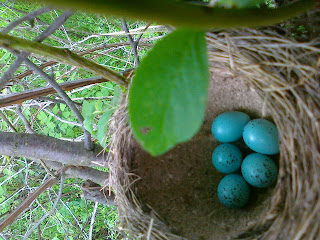I'm interested in garden birds since I was a little boy and I've decided to make post about interesting garden birds in Bulgaria and Europe. I think that those post are going to be very interesting and useful to people that are not so familiar with bird watching ,because they will be able to learn something about nature around them.
My friends ask me questions about birds very often and I'm very happy to answer them ,but I will try to make post for those who can't ask anyone.
My first post will be about Finches. There are only two species of finches in Bulgaria - Common Chaffinch (Fringilla coelebs) and Brambling (Fringilla montifringilla). I've never ringed Brambling in my life ,but they are one of my favorite garden birds. In Bulgaria it's much more likely to see Brambling in winter ,because through the warmer months they live in the mountain. I've gathered some information about the two species. There are also pictures from Wikipedia.
The Common Chaffinch (Fringilla coelebs), usually known simply as the Chaffinch is a common and widespread small passerine bird in the finch family. The male is brightly coloured with a blue-grey cap and rust-red underparts. The female is much duller in colouring but both sexes have two contrasting white wings-bars and white sides to the tail. The male bird has a strong voice and sings from exposed perches to attract a mate.
The Chaffinch breeds in much of Europe, across Asia to Siberia and in northwest Africa. It prefers open woodland and often forages on the ground. The female builds a nest with a deep cup in the fork of a tree. The clutch is typically 4–5 eggs, which hatch in about 13 days. The chicks fledge in around 14 days but are fed by both adults for several weeks after leaving the nest. The Chaffinch is a partial migrant; birds breeding in warmer regions are sedentary while those breeding in the colder northern areas of its range winter further south.
The Chaffinch is about 14.5 cm (5.7 in) long, with a wingspan of 24.5–28.5 cm (9.6–11.2 in) and a weight of 18–29 g (0.63–1.0 oz). The adult male of the nominate subspecies has a black forehead and a blue-grey crown, nape and upper mantle. The rump is a light olive-green; the lower mantle and scapulars form a brown saddle. The side of head, throat and breast are a dull rust-red merging to a pale creamy-pink on the belly. The central pair of tail feathers are dark grey with a black shaft streak. The rest of the tail is black apart from the two outer feathers on each side which have white wedges. Each wing has a contrasting white panel on the coverts and a buff-white bar on the secondaries and inner primaries. The flight feathers are black with white on the basal portions of the vanes. The secondaries and inner primaries have pale yellow fringes on the outer web whereas the outer primaries have a white outer edge.
After the autumn moult the tips of the new feathers have a buff fringe that adds a brown cast to the colored plumage. The ends of the feathers wear away over the winter so that by the spring breeding season the underlying brighter colors are displayed.The eyes have dark brown irises and the legs are grey-brown. In winter the bill is a pale grey and slightly darker along the upper ridge or culmen, but in spring the bill becomes bluish-grey with a small black tip.
The adult female is much duller in appearance than the male. The head and most of upperparts are shades of grey-brown. The underparts are paler. The lower back and rump are a dull olive green. The wings and tail are similar to those of the male. The juvenile resembles the female.
The Brambling (Fringilla montifringilla) is a small passerine bird in the finch family Fringillidae. The common English name is probably derived from Common West Germanic *brâma, meaning bramble or a thorny bush. (Compare Standard German Brämling with the same meaning.) It has also been called the Cock o' the North and the Mountain Finch.
The Brambling is similar in size and shape to a Common Chaffinch. Breeding-plumaged male Bramblings are very distinctive, with a black head, dark upperparts, orange breast and white belly. Females and younger birds are less distinct, and more similar in appearance to some Chaffinches. In all plumages, however,
Bramblings differs from Chaffinches in a number of features:
-Brambling has a white rump whereas that of Chaffinch is grey-green;
-the breast is orange, contrasting with a white belly on Brambling, whereas on Chaffinch the underparts of more uniformly coloured (pink or buff);
-Brambling's scapulars are orange, whereas Chaffinch's are grey or grey-brown;
-the flanks are dark-spotted on Brambling, plain on Chaffinch;
-Bramblings lack the white outer tail feathers of Chaffinch.
An additional difference for all plumages except breeding-plumaged males is the bill colour - yellow in Brambling, dull pinkish in Chaffinch (breeding-plumaged male Bramblings have black bills, Chaffinches in the corresponding plumage have grey bills).
-->
-->







.jpg)
.jpg)













































